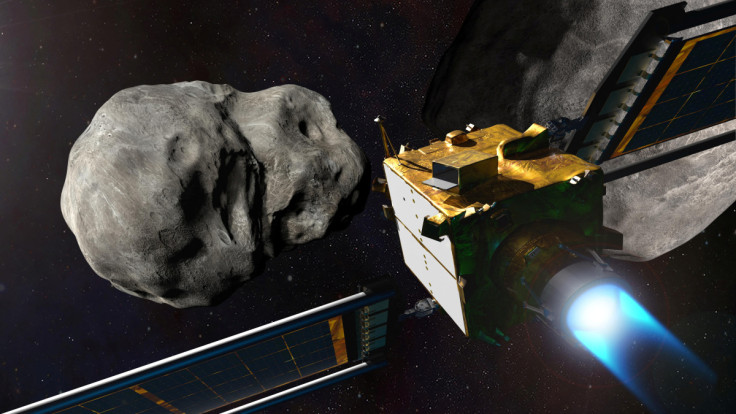Mission Success: Watch The Moment A NASA Spacecraft Crashes Into Asteroid
KEY POINTS
- The DRACO camera captured DART's journey till the collision
- ESA's Hera mission will inspect Dimorphos' post-impact orbit
- Planetary defense missions show the importance of international collaboration
It's official. NASA's DART (Double Asteroid Redirection Test) spacecraft has successfully impacted its target asteroid, and the world has witnessed the momentous event.
Mission control announced the successful impact at 7.14 p.m. ET Monday. In a video NASA shared on Twitter, one can see the spacecraft as it slowly approached the asteroid, with the mission team excitedly waiting for the collision. It grew closer and closer until the impact was finally confirmed.
"IMPACT SUCCESS! Watch from #DARTMIssion's DRACO Camera, as the vending machine-sized spacecraft successfully collides with asteroid Dimorphos, which is the size of a football stadium and poses no threat to Earth," the agency wrote.
IMPACT SUCCESS! Watch from #DARTMIssion’s DRACO Camera, as the vending machine-sized spacecraft successfully collides with asteroid Dimorphos, which is the size of a football stadium and poses no threat to Earth. pic.twitter.com/7bXipPkjWD
— NASA (@NASA) September 26, 2022
In another tweet, the agency shared the final moments of DART before it made an impact. "Don't want to miss a thing?" NASA tweeted, referring to a song from the sci-fi movie "Armageddon."
Don't want to miss a thing? Watch the final moments from the #DARTMission on its collision course with asteroid Dimporphos. pic.twitter.com/2qbVMnqQrD
— NASA (@NASA) September 26, 2022
NASA's DART mission is the world's first-ever planetary defense test mission to see whether crashing a spacecraft into an asteroid on purpose would divert its orbit. The idea is to see whether it's a viable planetary defense option should the threat arise in the future.
Even NASA is aware that the idea sounds like the plot of a movie. In a pre-recorded video shared on Twitter, NASA Administrator Bill Nelson called the mission a "giant step in planetary defense," and also cited the movie "Armageddon."
"It'll be a first test to help determine our response if we really do see an asteroid that's out there threatening to hit Earth," he said in the video. "We've all seen it on movies like Armageddon, but the real life stakes are high."
He also stressed the importance of such missions and NASA's work, saying "we only have one home, so we ought to take care of it."
Tonight @NASA will crash an uncrewed spacecraft into an asteroid. On purpose.
— Bill Nelson (@SenBillNelson) September 26, 2022
Yes, you read that correctly. And no, this is not a movie plot.
The #DARTmission is the world’s first mission to test technology for defending Earth against potential asteroid or comet hazards! pic.twitter.com/XCBtdsgVV0
The European Space Agency (ESA), which is set to launch a follow-up Hera mission to inspect Dimorphos' post-impact orbit, congratulated the DART team, calling it a "historic impact."
"Making contact with a target that small across 11 million km of space is an impressive technical achievement in itself, tonight a wonderful page of space history has been written. One that we have all been looking forward to for many years," Hera mission manager, Ian Carnelli, said in a news release.
"Next comes a period of sustained observation by ground and space-based telescopes to determine if DART's impact has indeed achieved what it was intended to do, and move the orbit of the Dimorphos 'moonlet' around its parent 780-m diameter Didymos asteroid," Carnelli added.
Both NASA's DART and the ESA's Hera are supported by an international team of scientists. These missions are a testament to "what international collaboration can achieve," ESA said.

© Copyright IBTimes 2024. All rights reserved.






















